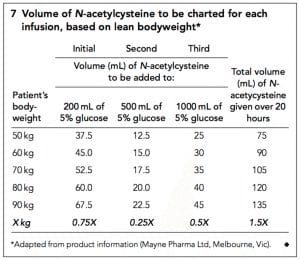
Supportive care for the patient is likely to include supplemental oxygen and intravenous fluid therapy to maintain adequate hydration and electrolyte balance. Similarly, kidney function must be monitored to detect any changes indicative of liver or kidney failure. Since paracetamol poisoning is caused by an active metabolite that reduces the concentration of glutathione in the liver and in erythrocytes, thus damaging both, and the main consequence in dogs is hepatic necrosis, the liver must be monitored closely. A blood transfusion may be required if anaemia, haematuria or haemoglobinuria are observed. The presence of methaemoglobin in blood and signs such as jaundice and haematuria require hospitalisation and intensive care. These diagnostic tests will help determine the level of toxicity and treatment options. The first step is decontamination: if less than 4 hours have elapsed, attempts should be made to eliminate the toxin by inducing vomiting, gastric lavage and by administering activated carbon (traps the remaining molecules of paracetamol and prevents them from being absorbed by the gastrointestinal tract).Ī complete physical examination, blood chemistry, blood count, urinalysis and faecal examination should be performed.

It is important that the owner indicates the exact amount of paracetamol ingested and when. Veterinary professionals should begin by recording the dog’s medical history.

Diagnosis and treatment of paracetamol poisoning in dogs The consumption of large doses of paracetamol can also have very serious consequences in dogs and one third of animals die within 24–72 hours.


 0 kommentar(er)
0 kommentar(er)
